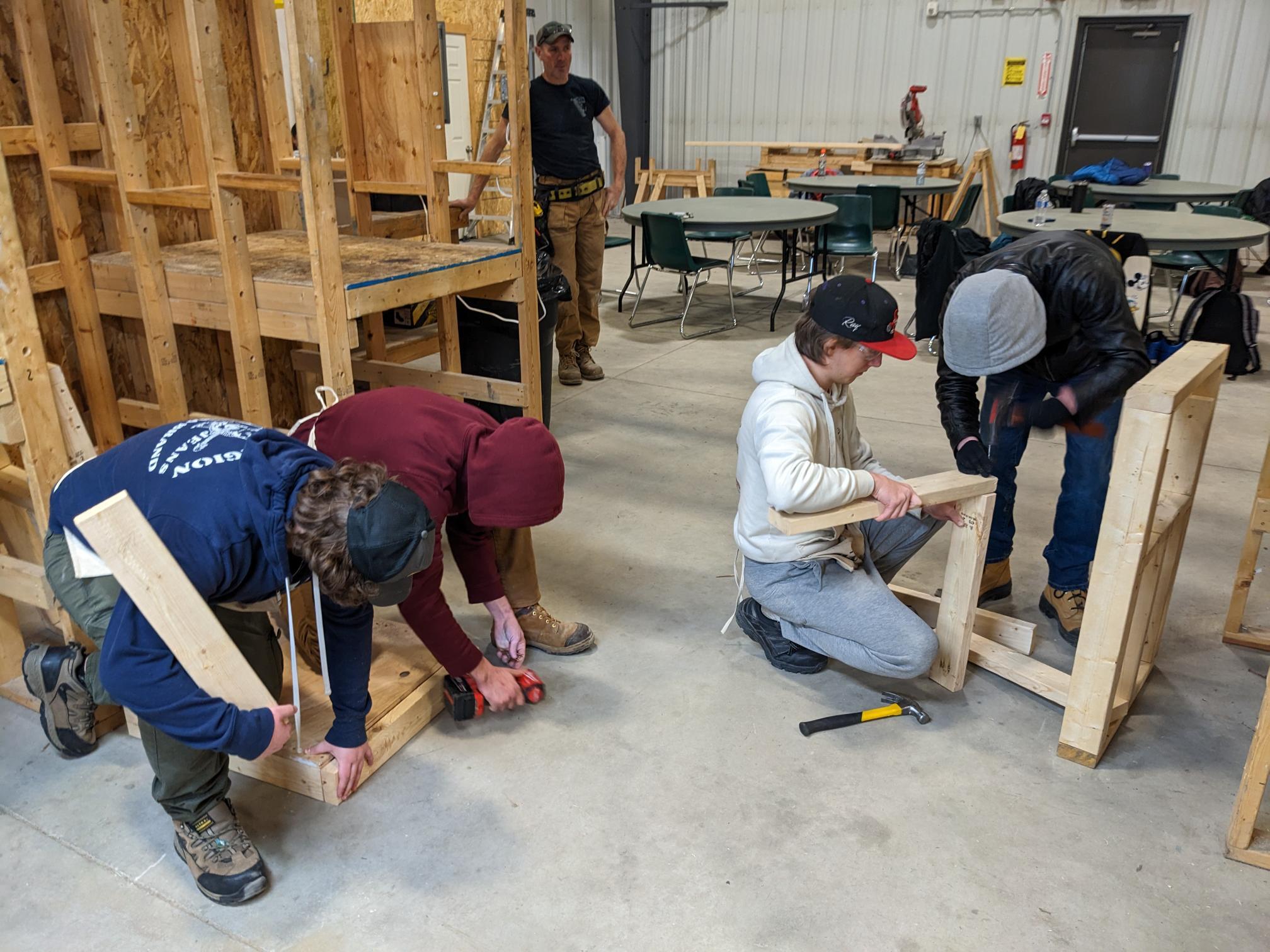A dual-credit program at Conestoga is exploring uncharted territory by welcoming visually impaired high school students into a carpentry course with the plan of offering more courses to teach them foundational skills for a trades career.

Five students from the W. Ross MacDonald School for the Blind in Brantford are joining teens from the city’s two school boards for the interior finishing carpentry dual-credit program.
Five students from the W. Ross MacDonald School for the Blind in Brantford are joining teens from the city’s two school boards for the interior finishing carpentry credit - a first time for the college’s School of Trades & Apprenticeship.
The students are paired up as usual for the carpentry projects they’ll tackle in the four-week program at the Brantford campus, matching a partially sighted student with a sighted student. “When there’s a skill or a task that they aren’t able to do, they rely on their partner to do it but they’re working together,” said Adam Davies, chair in the School of Trades & Apprenticeship.
On the first day, for example, the sighted students measured and marked the wood and then helped the partially sighted students line up the tools to make a cut. Some simple accommodations were added to make things easier for the partially sighted students such as magnetic drill bits and extra lighting in the shop.
“Apart from that, it’s business as usual in terms of how we’re running the projects,” Davies said. “We’re treating them like they’re regular students.”
All 24 students will work with the regular carpentry tools with no special set-up. Three girls are in the course, including one from the blind school, and they’ve teamed up.
The aim of the course is the same for all the students: teach them practical skills that can help set them up for future employment in the trades, Davies said. “We really are focusing on trying to build skills that they will be able to take to an employer after they graduate from high school.”
The plan is to continue offering trades programming to students from W. Ross MacDonald, a Brantford institution founded in 1872. Working together, they will determine what trades-based skills they can do and how the instructors can assist in developing those skills.
Davies commends carpentry instructor Ted Baker for doing a great job of adapting and pivoting as needed to suite the students’ learning needs.
Conestoga staff embraced the students with excitement and a willingness to learn and accommodate as needed, said Marisa Parker, educational co-ordinator at W. Ross MacDonald.
“It’s very rare to have organizations so willing to do something that would traditionally be a little out of the comfort zone for most. This type of program reinforces for our students that they are capable and promotes that view with the public,” Parker said.
Guidance councillor Darren Rorabeck said the school is excited for this innovative partnership and the opportunity for blind and partially sighted students to get hands-on carpentry experience - the first time for such a partnership connecting the students to a trade.
“This represents a significant step forward in providing inclusive educational opportunities for our students in the diverse field of the skilled trades,” Rorabeck said.
“Our primary hope for the students is that they gain valuable hands-on experience and practical skills that will empower them in their academic and professional journeys. Through this experience, we aim to foster a sense of confidence, independence, and accomplishment among our students as they engage with the material and overcome challenges in a supportive learning environment.”
The school views this as a stepping stone toward offering more courses to expand the educational opportunities available to their students and ensure they are well-prepared for success in various fields.
The collaboration is a significant step toward fostering inclusivity in skilled trades education for partially sighted students, ensuring that no student is limited by physical abilities when pursuing their educational and vocational goals, Rorabeck said. “We believe that expanding these opportunities will not only benefit our students, but contribute to creating a more equitable and diverse workforce in the skilled trades.”
Conestoga is a provincial leader in the delivery of trades and apprenticeship training to serve industry needs and the growing community. Comprehensive programming includes a wide range of post-secondary trades programs that provide pathways to employment in skilled trades careers as well as pre-apprenticeship training and in-school training for apprentices.
Visit the School of Trades & Apprenticeship for more information.
Conestoga’s dual-credit programs give high school students the opportunity to explore college life and learning while earning credits, and adults can also take classes needed to complete their high school diploma.
